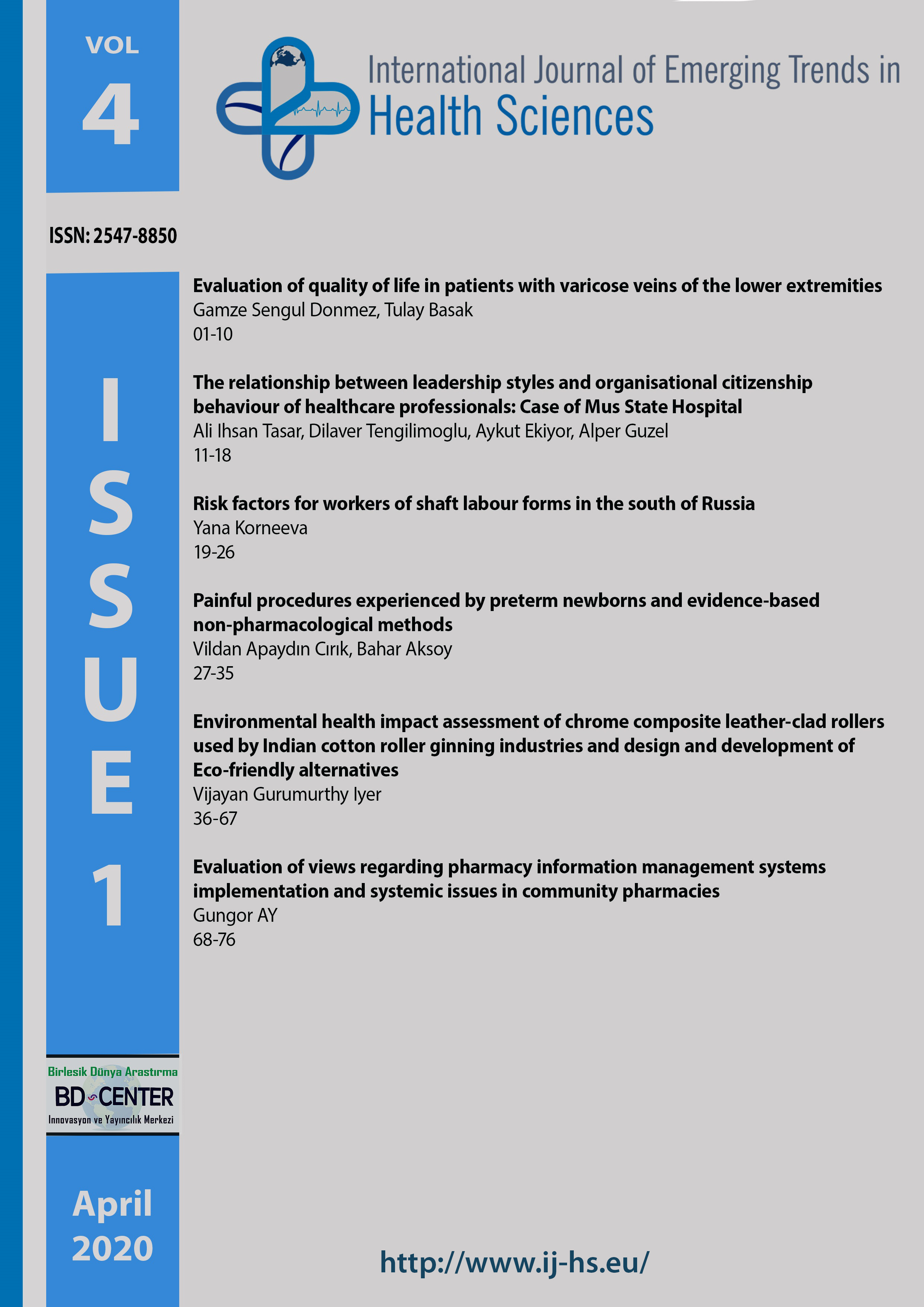Environmental health impact assessment of chrome composite leather-clad rollers used by Indian cotton roller ginning industries and design and development of Eco-friendly alternatives
Main Article Content
Abstract
This research article realises the hazards of chromium contamination and pollution caused by using chrome composite leather-clad (CCLC) rollers that are commonly used in the cotton roller ginning industries and attempts to eliminate the chromium contamination and pollution during the cotton ginning process. The chromium traces found contain hexavalent chromium being adsorbed from chromium-contaminated lint, yarn, fabrics, seeds, by-products and textile effluent. Chromium acts in three ways on humans, viz. (i) local action explained as dermatitis or absorption through skin, (ii) direct inhalation and (iii) ingestion or absorption into the stomach. Toxic effects are produced by prolonged contact with airborne or solid or liquid chromium compounds even in small quantities because of their properties, viz. carcinogenicity, mutagenicity and corrosiveness. Traces of Cr (VI) are found even in analar grade trivalent compounds, and complications do arise due to reduction in the nature of these traces that affect the organic tissues of the body. These regenerating effects occur rapidly and are dependent on the dose. This research article realises the hazards of chromium contamination and pollution caused by the use of dust-producing grinding of CCLC rollers that are commonly used in the cotton roller ginning industries and attempts to nullify this problem during cotton ginning. This research has been carried out with the following objectives: to identify and study the environmental health effects existing with the present CCLC rollers being used in the Indian cotton roller ginning industries; to conduct an environmental health impact assessment in Indian cotton roller ginning factories during the research years of 1998–2018; to design and develop an eco-friendly chrome-free roller and evaluate its performance with reference to environmental health effects and techno-commercial aspects in the ginning industries. With the author’s research background and practical experience in cotton ginning and textile industries, this study is attempted to eliminate the environmental health impacts to a great extent at the source itself, through a suitable design and development of an eco-friendly, pollution-free, chromeless roller for cotton roller gins. An eco-friendly roller ginning process has been designed and developed for replacing the conventional CCLC roller ginning process, to eliminate the chromium contamination and pollution from cotton roller ginning industries and to meet the requirements of World Health Organisation standards, while maintaining high-quality spun yarns and woven fabrics which meet the international standards.
Keywords: Assessment, chromium, ginning, health, impact.
Downloads
Article Details

This work is licensed under a Creative Commons Attribution 4.0 International License.
Authors who publish with this journal agree to the following terms:
- Authors retain copyright and grant the journal right of first publication with the work simultaneously licensed under a Creative Commons Attribution License that allows others to share the work with an acknowledgement of the work's authorship and initial publication in this journal.
- Authors are able to enter into separate, additional contractual arrangements for the non-exclusive distribution of the journal's published version of the work (e.g., post it to an institutional repository or publish it in a book), with an acknowledgement of its initial publication in this journal.
- Authors are permitted and encouraged to post their work online (e.g., in institutional repositories or on their website) prior to and during the submission process, as it can lead to productive exchanges, as well as earlier and greater citation of published work (See The Effect of Open Access).
